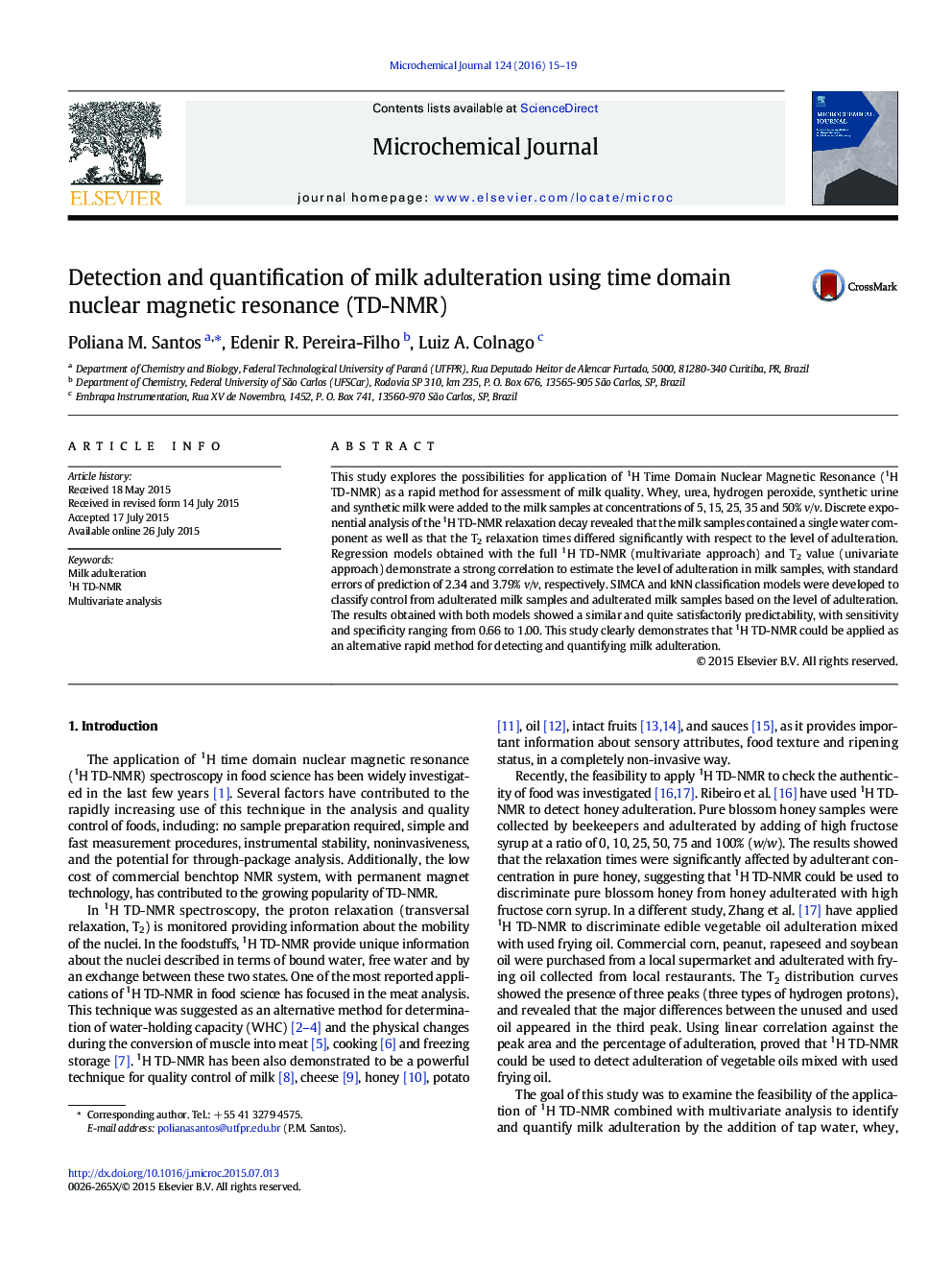| Article ID | Journal | Published Year | Pages | File Type |
|---|---|---|---|---|
| 7641858 | Microchemical Journal | 2016 | 5 Pages |
Abstract
This study explores the possibilities for application of 1H Time Domain Nuclear Magnetic Resonance (1H TD-NMR) as a rapid method for assessment of milk quality. Whey, urea, hydrogen peroxide, synthetic urine and synthetic milk were added to the milk samples at concentrations of 5, 15, 25, 35 and 50% v/v. Discrete exponential analysis of the 1H TD-NMR relaxation decay revealed that the milk samples contained a single water component as well as that the T2 relaxation times differed significantly with respect to the level of adulteration. Regression models obtained with the full 1H TD-NMR (multivariate approach) and T2 value (univariate approach) demonstrate a strong correlation to estimate the level of adulteration in milk samples, with standard errors of prediction of 2.34 and 3.79% v/v, respectively. SIMCA and kNN classification models were developed to classify control from adulterated milk samples and adulterated milk samples based on the level of adulteration. The results obtained with both models showed a similar and quite satisfactorily predictability, with sensitivity and specificity ranging from 0.66 to 1.00. This study clearly demonstrates that 1H TD-NMR could be applied as an alternative rapid method for detecting and quantifying milk adulteration.
Related Topics
Physical Sciences and Engineering
Chemistry
Analytical Chemistry
Authors
Poliana M. Santos, Edenir R. Pereira-Filho, Luiz A. Colnago,
